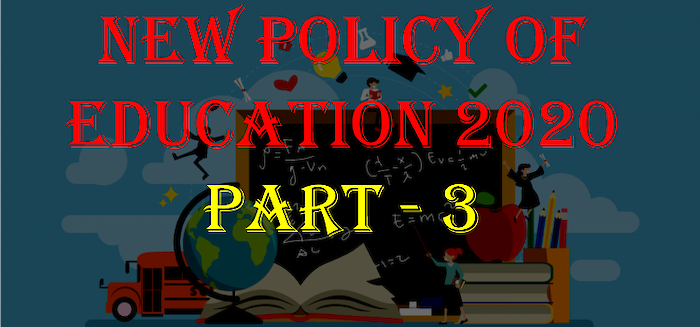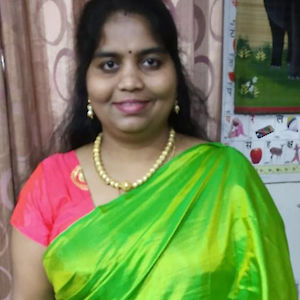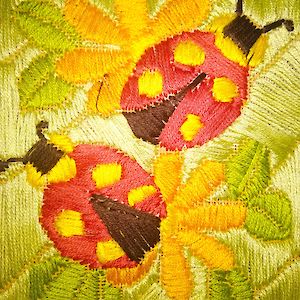Restructuring school curriculum & Pedagogy in a new design
Curriculum refers to the lessons and academic content taught in a school or in a specific course or program. Pedagogy refers to the method and practice of teaching. As per the new policy ,the curricular and pedagogical structure of school education will be reconfigured to make them responsive and relevant to the developmental needs and interests of learners at different stages of their development, corresponding to the age ranges of 3-8, 8-11, 11-14, and 14-18 years, respectively. The curricular and pedagogical structure and the curricular framework for school education will therefore be guided by a 5 + 3 + 3 + 4 .
Foundational Stage (3 years of preschool + Grades 1-2) :
In my first post I have written about the curriculum of ECCE. The curriculum will be inculcated using play/activity-based learning so that the children are not put under any stress also to retain their interest. Good behaviour, courtesy, ethics, personal and public hygiene/cleanliness, teamwork and cooperation, etc. will also be the focus of ECCE.
Preparatory Stage(Grades 3-5):
This stage will be a gradual transition phase from play-based learning to more formal but interactive classroom learning. Some light text books will be introduced in order to lay a solid groundwork across subjects. Emphasis will be there on reading, writing and speaking. The various subjects that will be part of the curriculum will be physical education, art, languages, science, and mathematics. The important thing that made me happy about this particular aspect of the policy is the various subjects listed had exactly the same order I mentioned here with physical education and art as the start point. In our present education system we have always noticed that these are the subjects that are given least importance. But children of this age group must be involved in physical education as inculcating the concept of physical fitness is very important. With lots of digital games available to the kids they are not involving themselves in active physical activities. School has to give importance to physical education as the importance of physical fitness inculcated in the young minds of this age group will be with them throughout their lives. This will help our India to be lead by healthy youngsters in future. Apart from physical fitness there are studies that show that physical education can help to improve the academic performance of a student. Regular physical activities are associated with higher levels of concentration and well-composed behaviours. It has also been well known that sports activities help to reinforce knowledge learned in other subjects. Physical education can help in the improvement of social interaction among kids. They learn how to cooperate through various group activities. Sports can be used to instil positive characters in the students and helps them to develop leadership skills. Similarly introducing Arts is also equally important along with other subjects as it will make the young minds creative. It helps them to improve their imagination and creativity. It helps the students to express their ideas and feelings. It also develops visual thinking among the kids. Visual thinking is also helpful in learning other core subjects. arts also help children to develop variety of skills like observation, problem solving and analytical. An art education teaches a specific set of thinking skills that are not adequately addressed elsewhere in the curriculum. The continued development of our society depends upon a creative education. So introducing the importance of sports and arts in this policy is a welcome move by the policy makers especially in the preparatory stage.
The Middle Stage (Grades6-8):
In this stage the students will be introduced learning/discussion of the more abstract concepts in each subject that students will be ready for at this stage, across the sciences, mathematics, arts, social sciences, and humanities.
The High School (or Secondary) Stage(Grades 9-10 in the 1st stage and Grades 11-12 in the 2nd stage):
It will be again a multidisciplinary study. High school stage will be subject - oriented pedagogical and curricular style of the middle stage but with greater depth, critical thinking, attention to aspirations of life, flexibility and student choice. The High School Stage may also allow exposure to more subjects with greater flexibility, and more frequent assessment of the smaller modules.
The above-described stages are purely curricular and pedagogical. It is designed to optimize learning for students based on cognitive development of children. Development of national and state curricula and teaching-learning strategies at each stage, will be based on these stages but it will not be necessary to make parallel changes to physical infrastructure.
All four stages, may also consider moving towards a semester system, or a system that allows the inclusion of shorter modules - or courses (such as arts or sports) that are taught on alternate days - in order to allow an exposure to more subjects and enable greater flexibility with more frequent formative assessment for learning. States may look into innovative methods to achieve these aims and objectives of the new policy
To close the gap between the current state of learning outcomes and what is truly needed, classroom transactions may shift in certain subjects, as appropriate towards competency based learning and education. Emphasis on competency based learning and teaching is very important and it is not present in the current system.
What is this competency based learning and education? It refers to systems of instruction, assessment, grading, and academic reporting that are based on students demonstrating that they have learned the knowledge and skills they are expected to learn as they progress through their education. The assessment must also be aligned with expected learning outcomes, capabilities and dispositions as specified for each subject of a given class. To achieve this, in all stages, experiential learning must be adopted, including arts integrated and sports integrated education, storytelling based pedagogy, among others, as standard pedagogy within each subject, with explorations of relations among different subjects.
The key overall thrust of curriculum and pedagogy reform across all stages will be to move the education system towards real understanding and learning how to learn. It is to steer away the education system from the culture of rote learning as is present today. The goal will be to create holistic and well-rounded individuals equipped with key 21st-century skills. All aspects of curriculum and pedagogy will be reoriented and revamped to attain these critical goals.
Curriculum content will be reduced in each subject to its core essentials, to make space for critical thinking and more holistic, discovery-based, discussion-based, and analysis-based learning. The mandated contents will focus on key concepts, ideas, applications, and problem-solving. Teaching and learning will strive to be conducted more interactively; questions will be encouraged, and classroom sessions will regularly contain more fun, creative, collaborative, and exploratory activities for students for deeper and more experiential learning. Students will be given increased flexibility and choice of subjects to study, particularly in secondary school - including subjects in physical education, the arts, and vocational crafts –so that they may be free to design their own paths of study and life plans. Holistic development and a wide choice of subjects and courses year to year will be the new distinguishing feature of secondary school education. There will be no hard separation among ‘curricular’, ‘extra-curricular’, or ‘co-curricular’ areas, among ‘arts’, ‘humanities’, and ‘sciences’, or between ‘vocational’ or ‘academic’ streams. Subjects such as physical education, the arts, and vocational crafts, in addition to science, humanities, and mathematics, will be seriously incorporated throughout the school curriculum, with a consideration for what is interesting and safe at each age.
[ A total of 79 Likes and 37 Loves for this article. Please caste your vote.!! ]
Comment What You Think






